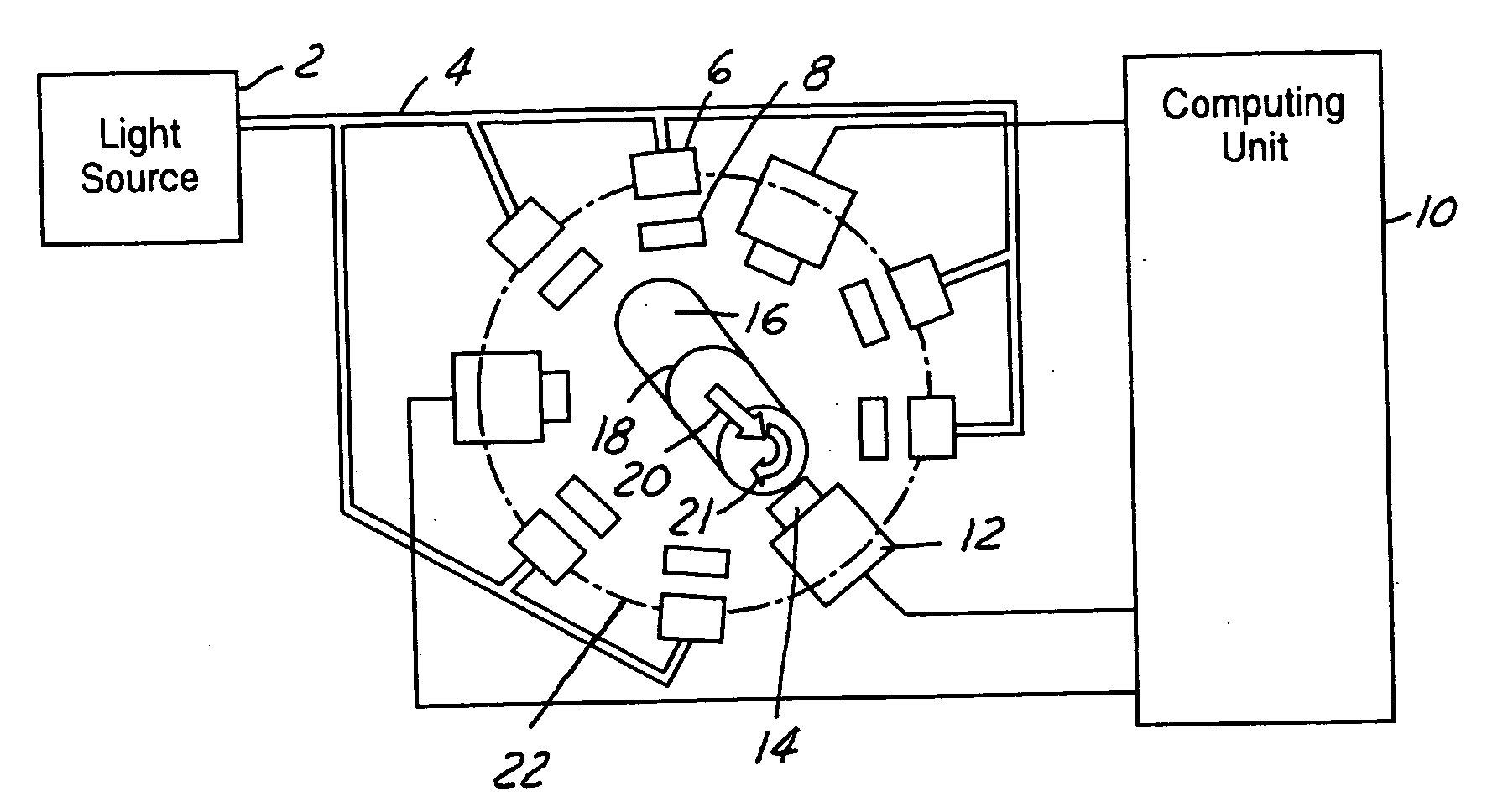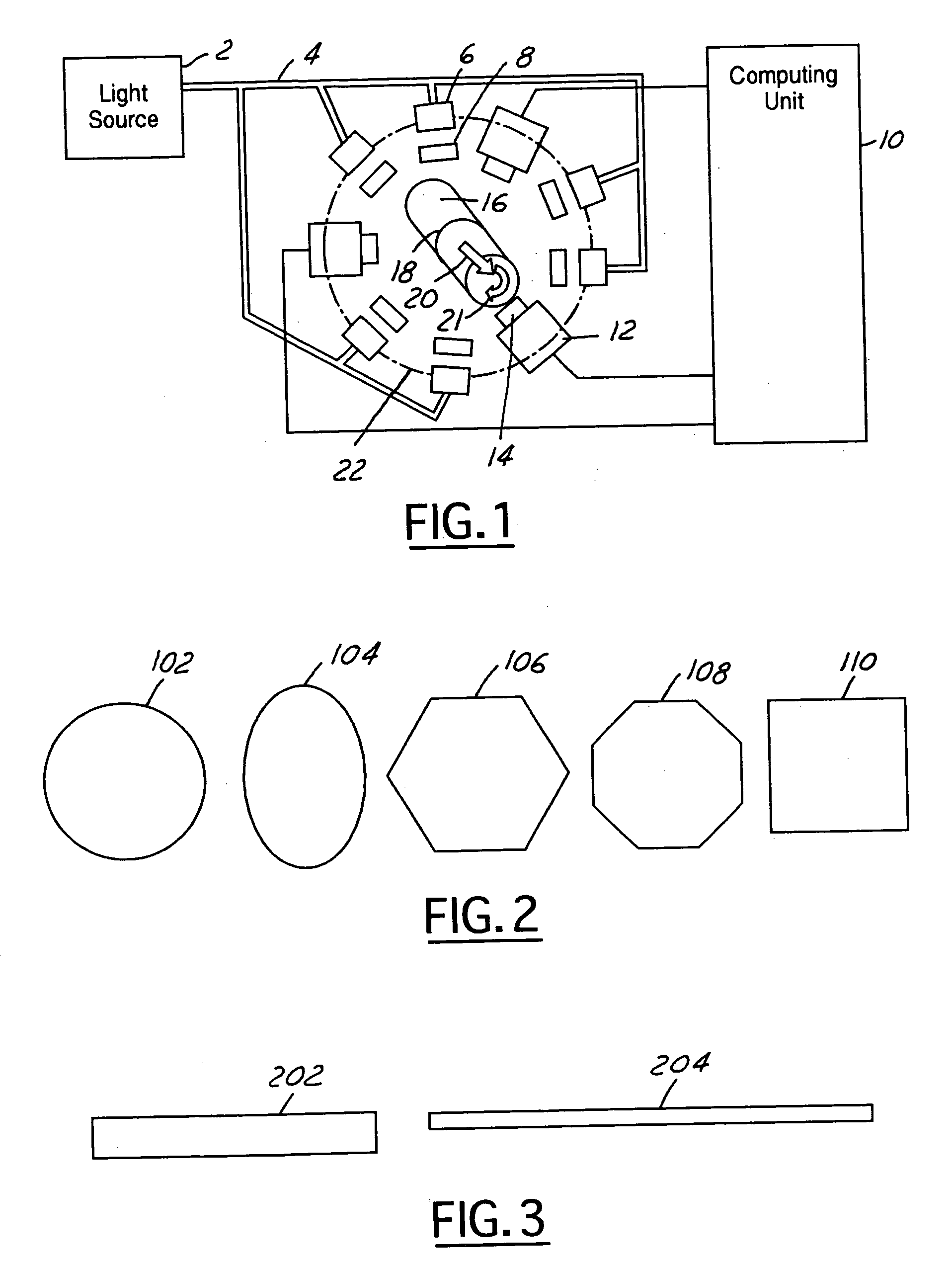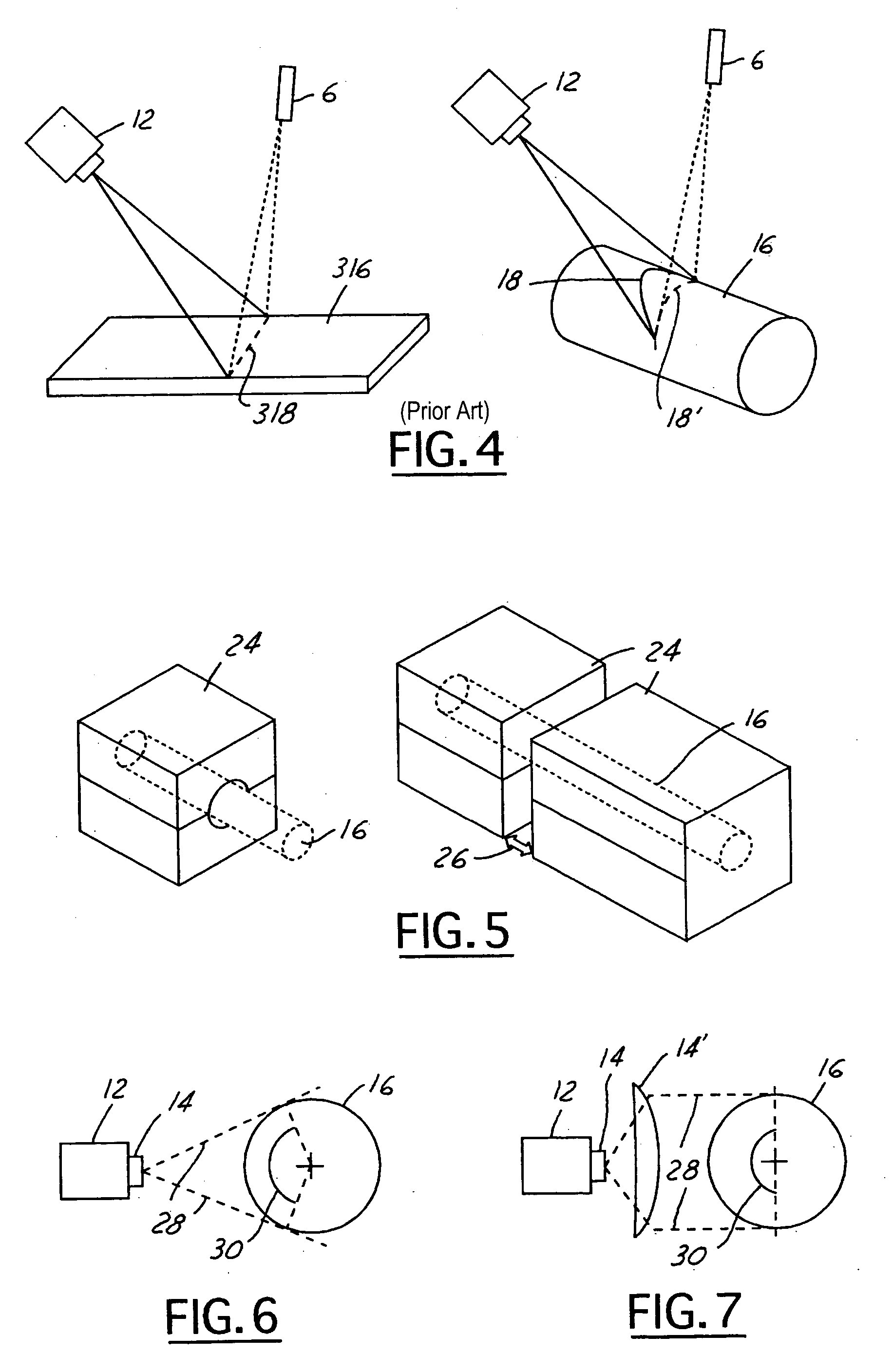Apparatus and method for detecting surface defects on a workpiece such as a rolled/drawn metal bar
a technology of surface defects and apparatus, applied in the field of apparatus and methods for detecting surface defects on workpieces, can solve the problems of substantial length of metal bars, inability to overcome challenges that conventional inspection approaches have not been able to overcome, and achieve the effects of high speed, effective use of image and detection of defects on non-flat surfaces, and increased working distan
- Summary
- Abstract
- Description
- Claims
- Application Information
AI Technical Summary
Benefits of technology
Problems solved by technology
Method used
Image
Examples
Embodiment Construction
[0050] The present invention permits automated inspection of metal bars for surface defects as the metal bars are being rolled, drawn or the like (i.e., the reducing process described in the Background of the Invention) without additional handling to the bars. FIG. 1 schematically illustrates a preferred embodiment in accordance with the present invention.
[0051] Before proceeding to a detailed description of the present invention keyed to the drawings, a general overview will be set forth. The present invention provides the following features:
[0052] 1. Capable of working for metal bars manufactured through reducing processes at different cross section geometry; [0053] 2. Capable of working for metal bars in-line at a bar temperature up to 1,650° C.; [0054] 3. Capable of working for metal bars traveling at 100 m / s or higher; [0055] 4. Capable of detecting surface defects whose critical dimensions are as small as 0.025 mm; [0056] 5. Capable of reporting the defect nature such as its...
PUM
| Property | Measurement | Unit |
|---|---|---|
| temperature | aaaaa | aaaaa |
| angles | aaaaa | aaaaa |
| temperature | aaaaa | aaaaa |
Abstract
Description
Claims
Application Information
 Login to View More
Login to View More - R&D
- Intellectual Property
- Life Sciences
- Materials
- Tech Scout
- Unparalleled Data Quality
- Higher Quality Content
- 60% Fewer Hallucinations
Browse by: Latest US Patents, China's latest patents, Technical Efficacy Thesaurus, Application Domain, Technology Topic, Popular Technical Reports.
© 2025 PatSnap. All rights reserved.Legal|Privacy policy|Modern Slavery Act Transparency Statement|Sitemap|About US| Contact US: help@patsnap.com



